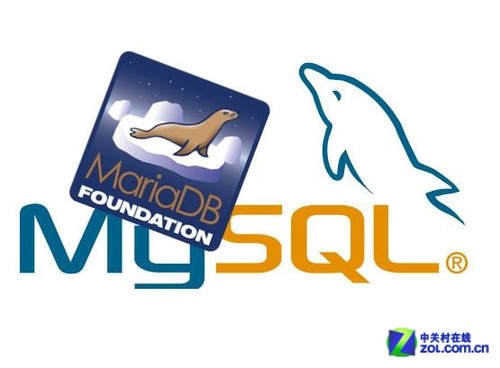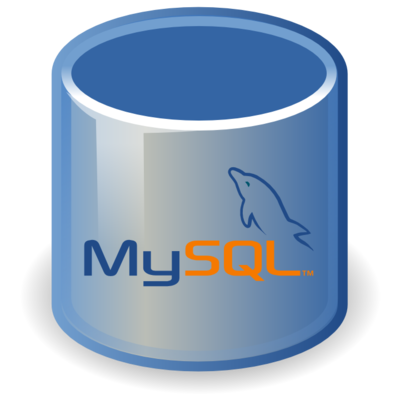Detailed tutorial on usage of inserting records
Inserting, browsing, modifying and deleting records in the data table can be completed using sql statements in the MySQL command line. The following describes how to execute basic SQL statements in the MySQL command line. 1. Insert records When establishing an empty database and data table, the first thing to consider is how to add total data to the data table. This operation can be completed using the insert statement. The syntax format is as follows: insert into data table name (column_name, column_name2,...) value (value1, value2,...) In MySQL, multiple rows of records can be inserted at the same time. The value list of each row of records is after the VALUES keyword. Separated by commas, standard SQL statements can only insert one row of records at a time. 2. Query database records To query data from the database, you must use the data query statement select. The select statement is the most commonly used query statement. Its use is somewhat complicated, but its function is powerful. The syntax format of the select statement is as follows: select selection_list
1. MySQL insertion and query statement operation (MYSQL statement operation tutorial 1)

Introduction: Inserting, browsing, modifying and deleting records in the data table can be completed using sql statements in the MySQL command line. Here is how to do it in the MySQL command line Execute basic SQL statements. 1. Insert records When establishing an empty database and data table, the first thing you need to consider is how to add total data to the data table. This operation can be completed using the insert statement. The syntax format is as follows:
2. Details of how mysql optimizes the speed of inserting records

Introduction: When inserting records, the main factors that affect the insertion speed are indexing, uniqueness verification, and the number of records inserted at one time. According to these situations, optimization can be performed separately. This section will introduce several methods to optimize the speed of inserting records. Let’s take a look with the editor below
3. SQL Server: Detailed explanation of triggers

Introduction: A trigger is a special stored procedure that cannot be called explicitly, but is automatically called when a record is inserted into the table, updated, or deleted. activation. So triggers can be used to implement complex integrity constraints on tables.
4. SQL Server trigger creation, deletion, modification, view

Introduction: A trigger is a special stored procedure that cannot be called explicitly, but is automatically activated when a record is inserted, updated, or deleted into the table. So triggers can be used to implement complex integrity constraints on tables.

Introduction: As shown in the figure , when the first two print_r have exit statements behind them, the data printed by print_r is normal. However, if you put exit after the sentence of inserting records (the sentence in the red box), some of the printed things will become null. Obviously, the above $_GET, and data are modified when executing the insert statement. But the printing is before the insert statement. The picture below is the print_r print after the exit statement is placed after the insert statement; ...
6. pcskys_windows7loader A new PDO transaction instance of a PDO-based database operation class
Introduction: pcskys_windows7loader: pcskys_windows7loader A new PDO transaction instance based on PDO database operation class: copy the code code as follows:
7 in one method. identity_insert Detailed explanation of PHP insert syntax
Introduction: identity_insert: Detailed explanation of identity_insert PHP insert syntax: There was such a sentence in the last program: $exec="insert into info (ename,pcname) values ('".$_POST["ename"]."','".$_POST[" pcname"]."')"; Explain the meaning of this sentence. The syntax for inserting records in SQL is: insert into table name (field name 1, field name 2, ...) values ("value of field 1", "value of field 2"
8. PHP gets the Mysql insert record ID
Introduction: PHP gets the Mysql insert record ID
9. PHP insert syntax detailed explanation_PHP tutorial
Introduction: PHP insert syntax detailed explanation There is such a sentence in the last program: $exec="insertintoinfo(ename,pcname) values('".$_POST["ename"]."','".$_POST["pcname"]."')"; Explain the meaning of this sentence. SQL syntax for inserting records
10. php+odbc+access database operation function, passed the test under windows_PHP tutorial
##Introduction: php+odbc+ The access database operation function passed the test under Windows. I downloaded adodb a few days ago and wanted to use adodb to connect to the access database. Later, I was able to connect, but I couldn't update or insert records. I don't know why no one has given it to me yet. Answer that troubled question
[Related Q&A recommendations]:
The best solution for table structure design of PHP site messages
php - How to get the value of the auto-increment item of a new record?
java - jdbc Chinese garbled code
python When inserting records into sqlite, the judgment of whether records exist does not work
mysql - How to use php transaction processing for Alipay timely payment
The above is the detailed content of Detailed tutorial on usage of inserting records. For more information, please follow other related articles on the PHP Chinese website!

Hot AI Tools

Undresser.AI Undress
AI-powered app for creating realistic nude photos

AI Clothes Remover
Online AI tool for removing clothes from photos.

Undress AI Tool
Undress images for free

Clothoff.io
AI clothes remover

Video Face Swap
Swap faces in any video effortlessly with our completely free AI face swap tool!

Hot Article

Hot Tools

Notepad++7.3.1
Easy-to-use and free code editor

SublimeText3 Chinese version
Chinese version, very easy to use

Zend Studio 13.0.1
Powerful PHP integrated development environment

Dreamweaver CS6
Visual web development tools

SublimeText3 Mac version
God-level code editing software (SublimeText3)

Hot Topics
 1664
1664
 14
14
 1423
1423
 52
52
 1318
1318
 25
25
 1269
1269
 29
29
 1248
1248
 24
24
 MySQL's Role: Databases in Web Applications
Apr 17, 2025 am 12:23 AM
MySQL's Role: Databases in Web Applications
Apr 17, 2025 am 12:23 AM
The main role of MySQL in web applications is to store and manage data. 1.MySQL efficiently processes user information, product catalogs, transaction records and other data. 2. Through SQL query, developers can extract information from the database to generate dynamic content. 3.MySQL works based on the client-server model to ensure acceptable query speed.
 Explain the role of InnoDB redo logs and undo logs.
Apr 15, 2025 am 12:16 AM
Explain the role of InnoDB redo logs and undo logs.
Apr 15, 2025 am 12:16 AM
InnoDB uses redologs and undologs to ensure data consistency and reliability. 1.redologs record data page modification to ensure crash recovery and transaction persistence. 2.undologs records the original data value and supports transaction rollback and MVCC.
 MySQL: An Introduction to the World's Most Popular Database
Apr 12, 2025 am 12:18 AM
MySQL: An Introduction to the World's Most Popular Database
Apr 12, 2025 am 12:18 AM
MySQL is an open source relational database management system, mainly used to store and retrieve data quickly and reliably. Its working principle includes client requests, query resolution, execution of queries and return results. Examples of usage include creating tables, inserting and querying data, and advanced features such as JOIN operations. Common errors involve SQL syntax, data types, and permissions, and optimization suggestions include the use of indexes, optimized queries, and partitioning of tables.
 MySQL's Place: Databases and Programming
Apr 13, 2025 am 12:18 AM
MySQL's Place: Databases and Programming
Apr 13, 2025 am 12:18 AM
MySQL's position in databases and programming is very important. It is an open source relational database management system that is widely used in various application scenarios. 1) MySQL provides efficient data storage, organization and retrieval functions, supporting Web, mobile and enterprise-level systems. 2) It uses a client-server architecture, supports multiple storage engines and index optimization. 3) Basic usages include creating tables and inserting data, and advanced usages involve multi-table JOINs and complex queries. 4) Frequently asked questions such as SQL syntax errors and performance issues can be debugged through the EXPLAIN command and slow query log. 5) Performance optimization methods include rational use of indexes, optimized query and use of caches. Best practices include using transactions and PreparedStatemen
 Why Use MySQL? Benefits and Advantages
Apr 12, 2025 am 12:17 AM
Why Use MySQL? Benefits and Advantages
Apr 12, 2025 am 12:17 AM
MySQL is chosen for its performance, reliability, ease of use, and community support. 1.MySQL provides efficient data storage and retrieval functions, supporting multiple data types and advanced query operations. 2. Adopt client-server architecture and multiple storage engines to support transaction and query optimization. 3. Easy to use, supports a variety of operating systems and programming languages. 4. Have strong community support and provide rich resources and solutions.
 MySQL vs. Other Programming Languages: A Comparison
Apr 19, 2025 am 12:22 AM
MySQL vs. Other Programming Languages: A Comparison
Apr 19, 2025 am 12:22 AM
Compared with other programming languages, MySQL is mainly used to store and manage data, while other languages such as Python, Java, and C are used for logical processing and application development. MySQL is known for its high performance, scalability and cross-platform support, suitable for data management needs, while other languages have advantages in their respective fields such as data analytics, enterprise applications, and system programming.
 How does MySQL index cardinality affect query performance?
Apr 14, 2025 am 12:18 AM
How does MySQL index cardinality affect query performance?
Apr 14, 2025 am 12:18 AM
MySQL index cardinality has a significant impact on query performance: 1. High cardinality index can more effectively narrow the data range and improve query efficiency; 2. Low cardinality index may lead to full table scanning and reduce query performance; 3. In joint index, high cardinality sequences should be placed in front to optimize query.
 MySQL: From Small Businesses to Large Enterprises
Apr 13, 2025 am 12:17 AM
MySQL: From Small Businesses to Large Enterprises
Apr 13, 2025 am 12:17 AM
MySQL is suitable for small and large enterprises. 1) Small businesses can use MySQL for basic data management, such as storing customer information. 2) Large enterprises can use MySQL to process massive data and complex business logic to optimize query performance and transaction processing.




